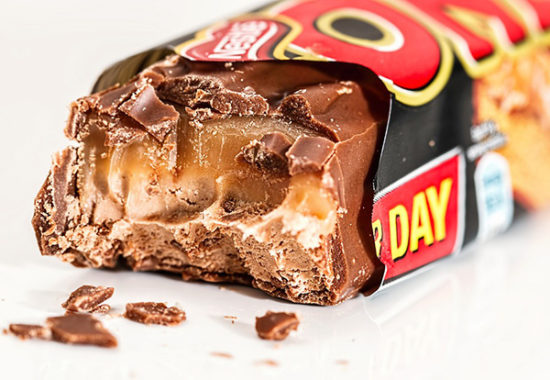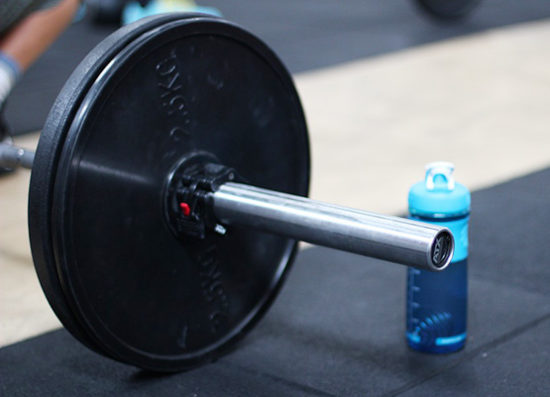How to refuel during competition
The pros and cons of sports drinks, energy gels, liquid food supplements and energy bars
 The myriad sport-specific fueling options available to athletes today means it’s much easier to refuel while on the move. You, and your athletes, are not alone, however, if the seemingly unlimited array of performance-enhancing sports drinks and energy foods has you confused about what to choose and when best to consume it.
The myriad sport-specific fueling options available to athletes today means it’s much easier to refuel while on the move. You, and your athletes, are not alone, however, if the seemingly unlimited array of performance-enhancing sports drinks and energy foods has you confused about what to choose and when best to consume it.
Keep in mind the word energy simply means the item supplies calories, and eating or drinking it does not make an athlete more energetic or guarantee a personal record.
Help athletes ward off “flavor fatigue” by developing a repertoire of palatable and well-tolerated energy foods to refuel during exercise. This includes learning to like more than one flavor of their favorite items. Allow athletes to experiment in training first so as to train the digestive tract and to avoid disasters during competitive efforts.Individuals vary widely in their preferences and tolerances, and every athlete needs to work on defining a refueling formula that works best for them. Use the following guidelines, complete with pros and cons, to instruct athletes on the optimal energy food for their next competition.
Sports drinks (fluid replacement)
Sports drinks are designed to maximize fluid absorption and to enhance performance by delivering readily absorbable carbohydrates and electrolytes — the most crucial being sodium. The better formulated (and tasting) drinks intended for use during exercise contain both simple carbs (sucrose, fructose and glucose) and complex carbs, such as glucose polymers and maltodextrin, with a higher percentage of complex than simple carbohydrates.
Check the label, as ingredients are listed by weight from most to least. Choose a sports drink over plain water when moderate-to-high intensity workouts or competitive efforts last 60 continuous minutes or longer.
• Pros: Multiple flavors and brands to choose from; readily usable liquid carbohydrates are absorbed more rapidly than solid food; sodium enhances the drive to drink and facilitates the absorption of carbohydrate.
• Cons: Unnecessary added ingredients can contribute to digestion woes; you’re hostage to the sports drink provided unless you bring or carry your own; unlikely to be enough alone to meet energy needs during prolonged efforts.
Energy gels, chews & blocks
 These sports foods provide fast-acting, easy-to-digest carbohydrate — exactly what hard-working muscles and the brain require to perform while going fast or long.
These sports foods provide fast-acting, easy-to-digest carbohydrate — exactly what hard-working muscles and the brain require to perform while going fast or long.
• Pros: Easy to chew and digest; many varieties also provide sodium and small amounts of caffeine, another (legal) performance booster during prolonged exercise.
• Cons: Need to be taken with recommended amount of water (6 to 8 ounces); semi-solid chews and blocks boost blood sugar levels more slowly than gels or sports drinks.
Liquid food supplements
In addition to carbohydrate, these beverages provide varying amounts of protein and fat, as well as vitamins, minerals, electrolytes and other lesser-proven ingredients, such as herbs and metabolites. Nutrient-dense, these “liquid energy bars” provide considerably more fuel or energy per ounce than traditional fluid replacement sport drinks.
Opt for a balanced meal-replacement beverage, like Ensure or Boost, or sport-specific varieties, like EnduroxR4 or Hammer Perpeteum, rather than those focusing solely on protein.
• Pros: Convenient mode for consuming a concentrated dose of energy (calories) and carbohydrate; act as pre-race meals or post-recovery drinks due to low-fiber and higher-energy content; typically well-tolerated option for athletes with sensitive stomachs.
• Cons: Can lead to digestive problems and dehydration if consumed during moderate-to-high-intensity exercise; if overused, calories from energy-dense beverage can contribute to unwanted weight gain.
Energy bars
When appropriate, energy bars are easy to chew and digest while on the move (e.g., during lower-intensity sports like golf) or during an hour or longer break in the action (i.e., swim meet, double header) Unless athletes are on the move longer than four hours, however, varieties obtaining mostif not alltheir calories from carbohydrate (70 percent or more) are best. It’s only over longer hauls when the body has time actually to digest and assimilate the fuel from other sources.
• Pros: Wide variety of flavors and textures to choose from; travel well; welcome alternative to sweet tasting drinks, gels, chews and blocks; another option for meeting higher energy requirements of longer lasting physical efforts.
• Cons: More difficult to chew and digest than liquids, especially when an athlete is fatigued; must take with ample fluid for proper digestion; solids can take much longer to boost the body’s blood sugar level than liquids.
Real food
Depending on the situation, you’ve seen athletes refuel with everything from sports drinks and energy gels to sandwiches, burritos and pizza. Athletes involved in sports that include breaks between competitive efforts of three to four hours or longer can be encouraged to consume real food.
Those participating in sporting activities of longer duration and slower pace (lower intensity) also benefit from consuming real food despite the extra time required to convert the food’s energy into fuel the body can use.
• Pros: Help fight “flavor fatigue” that’s common when consuming only sweet-tasting sports foods; help athletes meet the very high energy demands of prolonged training and competitive efforts; can be mentally uplifting or rewarding.
• Cons: Protein, fiber and fat in real foods can greatly slow absorption and digestion time and increase potential gastrointestinal problems; more complicated logistics of carrying and consuming while on the move.
Suzanne Girard Eberle, author of Endurance Sports Nutrition, is a board-certified sports dietitian in Portland, Oregon.





